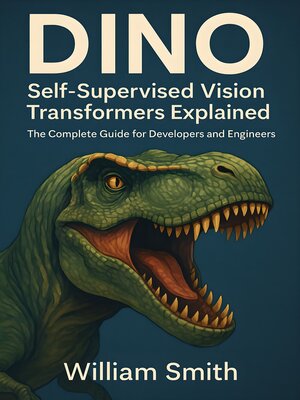
Sign up to save your library
With an OverDrive account, you can save your favorite libraries for at-a-glance information about availability. Find out more about OverDrive accounts.
Find this title in Libby, the library reading app by OverDrive.



Search for a digital library with this title
Title found at these libraries:
| Library Name | Distance |
|---|---|
| Loading... |
"DINO: Self-Supervised Vision Transformers Explained"
"DINO: Self-Supervised Vision Transformers Explained" offers a comprehensive and rigorous exploration of one of the most influential self-supervised learning methods for visual representation—DINO—as applied to Vision Transformers (ViTs). The book opens by charting the evolution of computer vision, tracing the shift from traditional supervised and convolutional paradigms to the rise of transformer-based architectures and self-supervised learning. With a clear-eyed examination of the limitations of supervised methods and the architectural motivations behind modern transformers, readers are equipped with foundational knowledge that frames the necessity and promise of self-supervised ViTs.
Delving into the heart of DINO, the text systematically unpacks the method's core concepts, including teacher-student architectures, self-distillation mechanics, and multi-crop augmentation strategies. Readers will find in-depth technical discussions on essential components such as multi-head self-attention, positional encoding, projection heads, and key regularization techniques. Practical engineering guidance accompanies theoretical explanations, featuring detailed advice on large-scale pretraining, distributed training, augmentation strategies, parameter tuning, and troubleshooting instability—making this work both accessible and actionable for practitioners and researchers.
Beyond the mechanics of model training, the book thoughtfully addresses the evaluation and deployment of DINO models in real-world and cross-domain scenarios—from medical imaging to satellite and industrial vision. It provides comparative studies with other self-supervised paradigms, best practices for reproducibility and open-source collaboration, and careful consideration of security, privacy, fairness, and ethical deployment. Concluding with a forward-looking view, the book identifies open research challenges and opportunities for DINO, positioning it as an essential reference for anyone seeking to understand or advance the field of self-supervised vision transformers.







